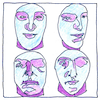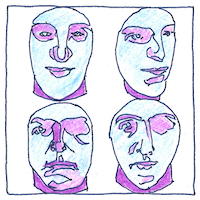Joachim Bodamer
anatomy

|
Prosopagnosia
Damage the fusiform gyrus area of your brain, or maybe you’re born that way, and you would find it difficult or impossible to recognize a face, even your own. You couldn’t tell whether two faces are the same or different. Your memories about people would be disordered and you’d find socializing difficult. You may have this condition and not know it. How is anyone to say how others do it? You would recognize voices, smells, and hairstyles, but not faces, even your mother’s.
Development
Normal babies can mimic facial expressions and at seven months can interpret facial expressions. Normal five-year-olds can recognize faces although adults do it more efficiently. Ducklings follow the first thing they lay their eyes on and this has nothing to do with facial recognition. Nevertheless, the exception proves the rule; the notion that we aren’t guided by instincts is bogus.
What is normal?
Normal for one person isn’t normal for another. Differences between individuals are greater than between groups. Normal is what you’re used to, an abstract and relative concept. Let’s not fool ourselves by thinking anyone is normal.



There’s no cure for prosopagnosia. Among the famous people who have or had prosopagnosia are Jane Goodall, Oliver Sacks, and Steve Wozniak.
See also in The book of science:
Readings in wikipedia:
Other readings: